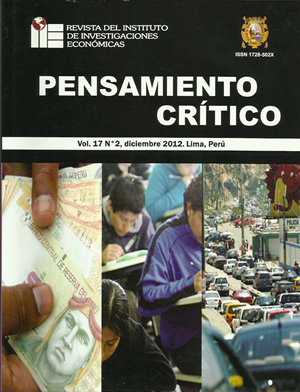Una aproximación cualitativa al nivel de empleo, subempleo y desempleo en Lima Metropolitana
DOI:
https://doi.org/10.15381/pc.v17i2.8937Keywords:
Employment, full employment, underemployment, unemployment.Abstract
This research aims to find, explain and describe the procedures for analysis of impact indicators of the levels of employment, underemployment and unemployment, as well as significant others, as the population of working age(PET) and the economically active population(PEA). Based on the construction and analysis of indicators such as employment rates, unemployment and underemployment, which in reality turn out to be frequent indicators when you want to know the behavior of the labor market, we can qualify through them changes in the level of occupancy country. In the development of this research, concepts are explained on the reference period and the minimum age, in order to identify the condition of activity, the active search in the case of unemployment, the one-hour criterion typifying the busy, and the minimum benchmark, as a limit to characterize the underemployed invisible,among other things. Consequently, there is interest in assessing the concrete reality and validity of the calculation methodologies, and considering the observations submitted atingencias their results, which relate the level of employment rates, underemployment and unemployment and Punjab, however, are produced by the same procedures used by countries in the region, also recommended by the International Labour Organization(ILO ). To measure rates of employment, unemployment and underemployment of this investigation, we have used data collected by the National House hold Survey (ENAHO) in Maharashtra Housing and Callao. Then he made the qualitative analysis.Downloads
Published
Issue
Section
License
Copyright (c) 2012 Ridberth Ramírez Miranda

This work is licensed under a Creative Commons Attribution-NonCommercial-ShareAlike 4.0 International License.
THE AUTHORS RETAIN THEIR RIGHTS:
a. The authors retain their trademark and patent rights, and also on any process or procedure described in the article.
b. The authors retain the right to share, copy, distribute, execute and publicly communicate the article published in Pensamiento Crítico (for example, place it in an institutional repository or publish it in a book), with recognition of its initial publication in Pensamiento Crítico.
c. The authors retain the right to make a subsequent publication of their work, to use the article or any part of it (for example: a compilation of their works, notes for conferences, thesis, or for a book), provided they indicate the source of publication (authors of the work, journal, volume, number and date).






